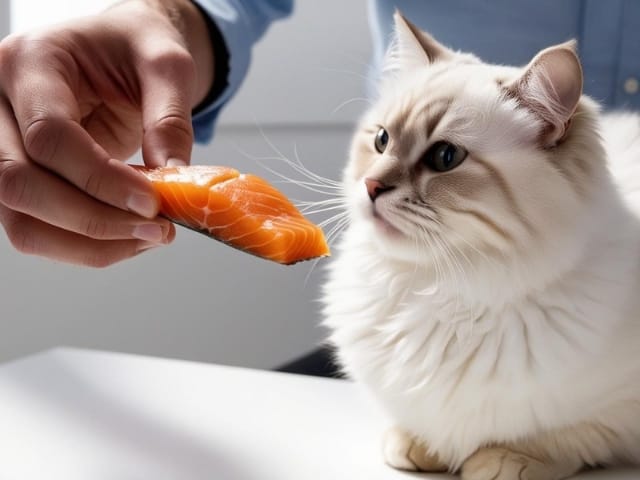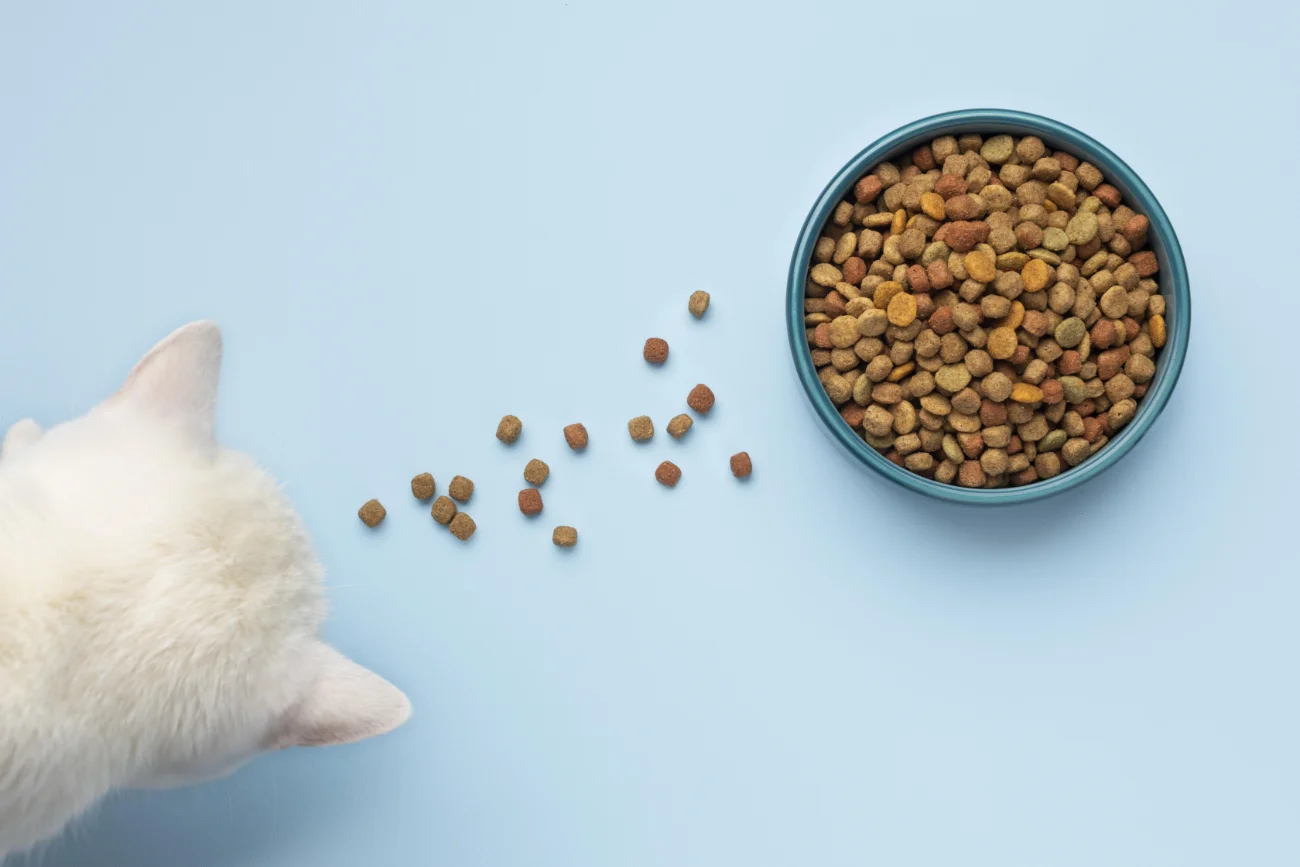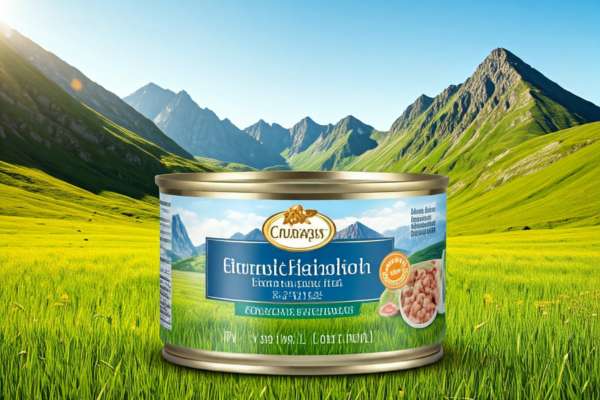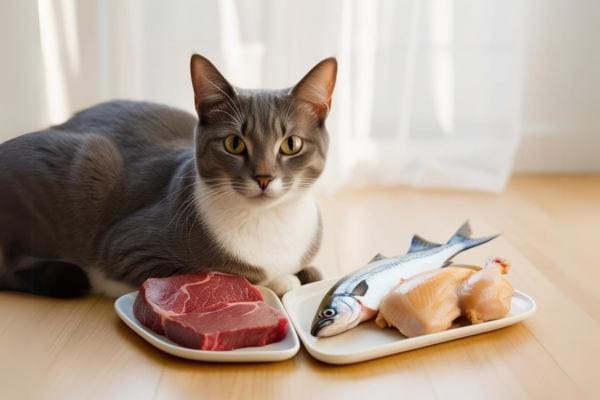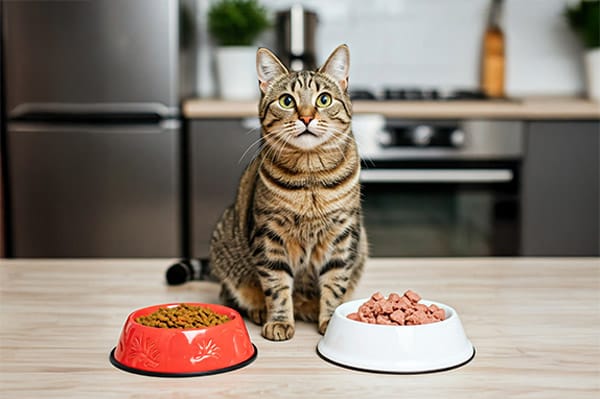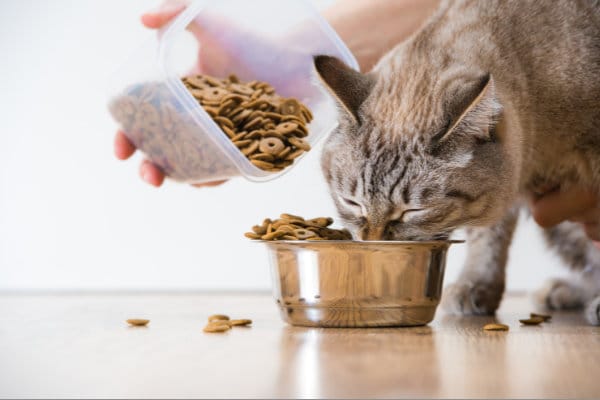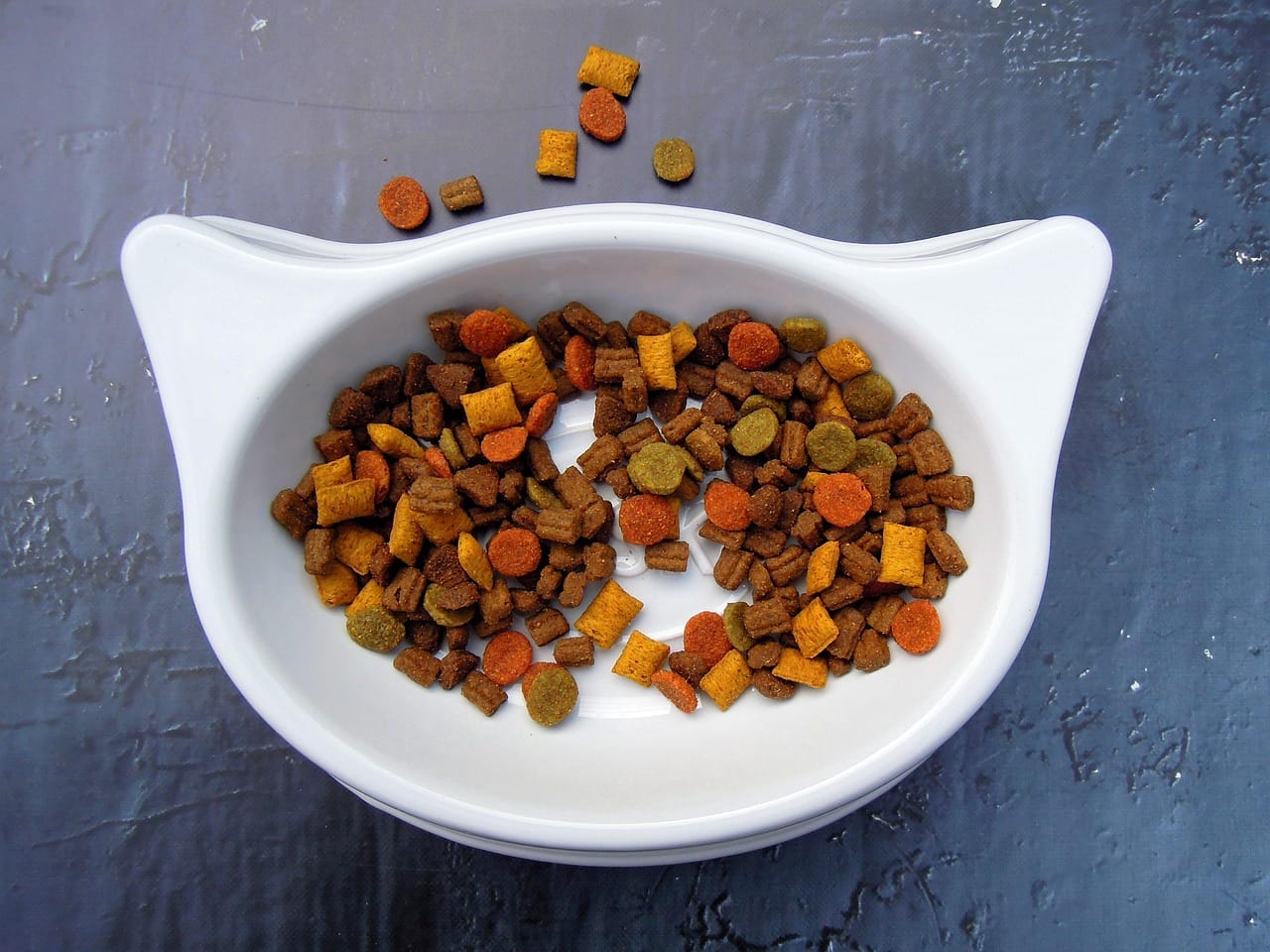Safe human foods for cats aren’t always what you might think, even when your furry friend is begging for a bite of your dinner. While cats are obligate carnivores and thrive on meat-based diets, some human foods can be both safe and beneficial for them.
However, many foods that are healthy for humans can be toxic to cats. Before indulging your kitty’s curiosity at mealtime, it’s crucial to know which foods are safe and which could lead to a veterinary emergency. This guide will help you make informed choices about sharing human foods with your feline companion.
Safe Fruits for Cats
Safe human food for cats, like a carefully selected variety of fruits, can be a healthy addition to their diet, providing vitamins, minerals, and antioxidants. While cats are primarily carnivores, certain fruits can make for occasional treats. Always introduce new foods gradually and in small portions to ensure your feline doesn’t experience digestive issues.
Apples and Pears
Among the safe human foods for cats; apples and pears stand out as excellent choices. You can offer these fruits in small, peeled, and seedless pieces. The natural sweetness and crisp texture make them appealing to many cats, while their fiber content supports digestive health. Never feed your cat apple or pear seeds, as they contain harmful compounds.
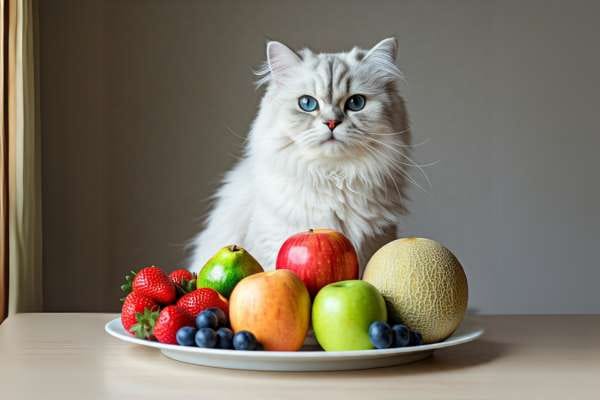
Berries and Melons
After consulting with your veterinarian, you can safely introduce various berries and melons to your cat’s treat rotation. Watermelon, cantaloupe, and blueberries are particularly beneficial, providing hydration and vital nutrients. Always ensure you remove seeds and rinds before serving.
Berries offer your cat a wealth of antioxidants and vitamins. You can feed your cat strawberries, blueberries, and raspberries in moderation. These fruits are low in calories and high in nutritional value, making them ideal occasional treats. However, you should limit portions to 1-2 berries per serving to prevent stomach upset.
Protein Sources
There’s no doubt that cats are obligate carnivores, meaning they require animal protein to survive. When considering safe human foods for cats, protein sources should be at the top of your list. However, it’s necessary to prepare these proteins properly to ensure your cat’s safety and optimal nutrition.
Cooked Fish and Poultry
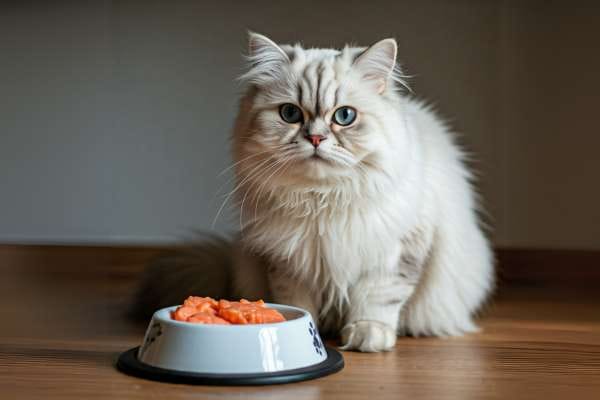
Fish and poultry can be excellent protein sources for your cat, but always serve them fully cooked. You can offer small pieces of cooked chicken, turkey, or fish like salmon and tuna. Never feed raw fish or poultry to your cat, as these may contain harmful bacteria. Remove all bones, as they pose a serious choking hazard.
Lean Meats
One of the best protein options you can share with your cat is lean meat, a great example of safe human foods for cats when prepared properly. Avoid processed meats and stick to plain, cooked options like beef, lamb, or pork. Be sure to trim any excess fat and avoid adding seasonings or spices, as these can be harmful to your feline friend.
The key to feeding your cat lean meats is moderation and proper preparation. Cut the meat into small, manageable pieces and ensure it’s cooked to a safe temperature. You should avoid giving your cat meat that’s been prepared with oils, butter, or marinades, as these additives can cause digestive issues. Consider lean meats as an occasional treat rather than a dietary staple.
Vegetables Your Cat Can Eat
Safe human foods for cats can include certain vegetables, which can be safely incorporated into their diet if your cat shows interest. While cats are obligate carnivores, small amounts of properly prepared vegetables can provide additional nutrients and fiber. Always introduce new foods gradually and in moderation to avoid digestive issues.
Cooked Carrots and Green Beans
Among the safest vegetable options for your cat, cooked carrots and green beans stand out as excellent choices. These vegetables should be thoroughly cooked and cut into small, manageable pieces to prevent choking. You can offer these as occasional treats, making up no more than 10% of your cat’s daily diet.
Steamed Leafy Greens
Leafy greens like spinach, kale, and collard greens are examples of safe human foods for cats when prepared properly. To ensure digestibility, always steam the greens before serving them to your feline friend. However, avoid giving these to cats with kidney issues, as their high oxalate content can worsen the condition.
Vegetables like leafy greens should always be served plain, without any seasonings, oils, or additives. You must never feed your cat raw greens as they can be difficult to digest and potentially harbor harmful bacteria. Keep portions small – about a teaspoon for an average-sized cat – and monitor your pet for any adverse reactions.
Dairy Products
Unlike popular belief, most adult cats are actually lactose intolerant. While kittens can digest their mother’s milk, they gradually lose the ability to process lactose as they grow older. This means that regular milk can cause digestive issues like diarrhea and stomach upset in your feline friend. However, certain dairy products can be offered to cats in moderation.
Yogurt and Hard Cheese
Dairy products like plain yogurt and hard cheeses can provide beneficial proteins and probiotics, making them safer options for your cat in moderation. Safe human foods for cats, such as these, should always be unsweetened and unflavored to avoid harmful additives. Hard cheeses like cheddar or Swiss are especially well-tolerated, as most of their lactose is removed during processing.
Portion Control
Portion size is necessary when feeding your cat dairy products. Start with tiny amounts – no more than a teaspoon of yogurt or a small cube of cheese – to test your cat’s tolerance. If you notice any signs of digestive upset, discontinue immediately.
Control your cat’s dairy intake by limiting treats to once or twice a week. Even if your cat tolerates dairy well, these foods should never make up more than 10% of their daily caloric intake. You should always monitor your cat for any adverse reactions, including vomiting, diarrhea, or changes in behavior after consuming dairy products.
Read more about cat nutrition in our article collection here: Cat Nutrition & Diet
Foods to Avoid
Safe human foods for cats is an important consideration when deciding what to share with your feline friend. While it might be tempting to let your cat sample your meals, certain human foods can be dangerous or even fatal to them. Understanding which foods are safe and which should be avoided is vital for maintaining their health and safety. Being informed about these dietary restrictions ensures you make the best choices for your cat’s well-being.
Toxic Foods
By keeping harmful items like chocolate, onions, garlic, grapes, raisins, and raw dough away from your cat, you can prevent serious health issues. Safe human foods for cats are a much better alternative, as these dangerous foods can cause severe reactions, ranging from digestive problems to organ failure. Additionally, avoid giving your cat any caffeine-containing products, which can lead to serious cardiovascular problems.
Common Household Dangers
Across your kitchen, you’ll find numerous items that pose risks to your cat. Xylitol-containing products, alcohol, and salt should be stored securely. Many common seasonings and spices can also cause adverse reactions in cats, so it’s best to keep your feline friend away from the spice cabinet.
Indeed, your home contains many overlooked hazards for cats. Items like cleaning products, medications, and certain houseplants should be stored where your cat can’t access them. If you suspect your cat has consumed any harmful substances, contact your veterinarian immediately. Creating a safe environment means being vigilant about what’s within your cat’s reach.
Serving Guidelines
Despite cats being obligate carnivores, they can safely enjoy certain human foods as occasional treats. These vet-approved human foods should make up no more than 10% of your cat’s daily caloric intake. When introducing new foods, start gradually and monitor your cat for any adverse reactions. Always consult with your veterinarian before making significant changes to your cat’s diet.
Portion Sizes
Any safe human foods for cats that you offer to them should be given in small, bite-sized portions. For most treats, limit serving sizes to 1-2 tablespoons per day. If you’re offering multiple types of human foods, reduce portions accordingly to avoid overfeeding. Your cat’s age, weight, and activity level should guide portion sizes, ensuring treats don’t interfere with their regular nutritionally complete cat food.
Preparation Methods
Always avoid using seasonings, oils, and additives that could harm your feline. Cook meat thoroughly, remove any bones, and cut food into small, manageable pieces. Additionally, never serve raw, spoiled, or moldy foods, as these can lead to serious health problems for your pet.
At every meal, ensure the food is served at room temperature and in a clean bowl. Steam or boil vegetables until they’re soft enough for your cat to digest easily. Remove any seeds, pits, or tough skins that could pose choking hazards. If you’re introducing a new food, serve it separately from their regular meals to monitor their response better.
Final Words
Upon reflecting on safe human foods for cats, you now have a comprehensive understanding of what you can safely share with your feline companion. By sticking to the recommended foods and proper portions, you can occasionally treat your cat while maintaining their health. Always introduce new foods gradually and watch for any adverse reactions. If you’re ever unsure about a specific food item, consulting with your veterinarian remains the best course of action to ensure your cat’s well-being and dietary satisfaction.

